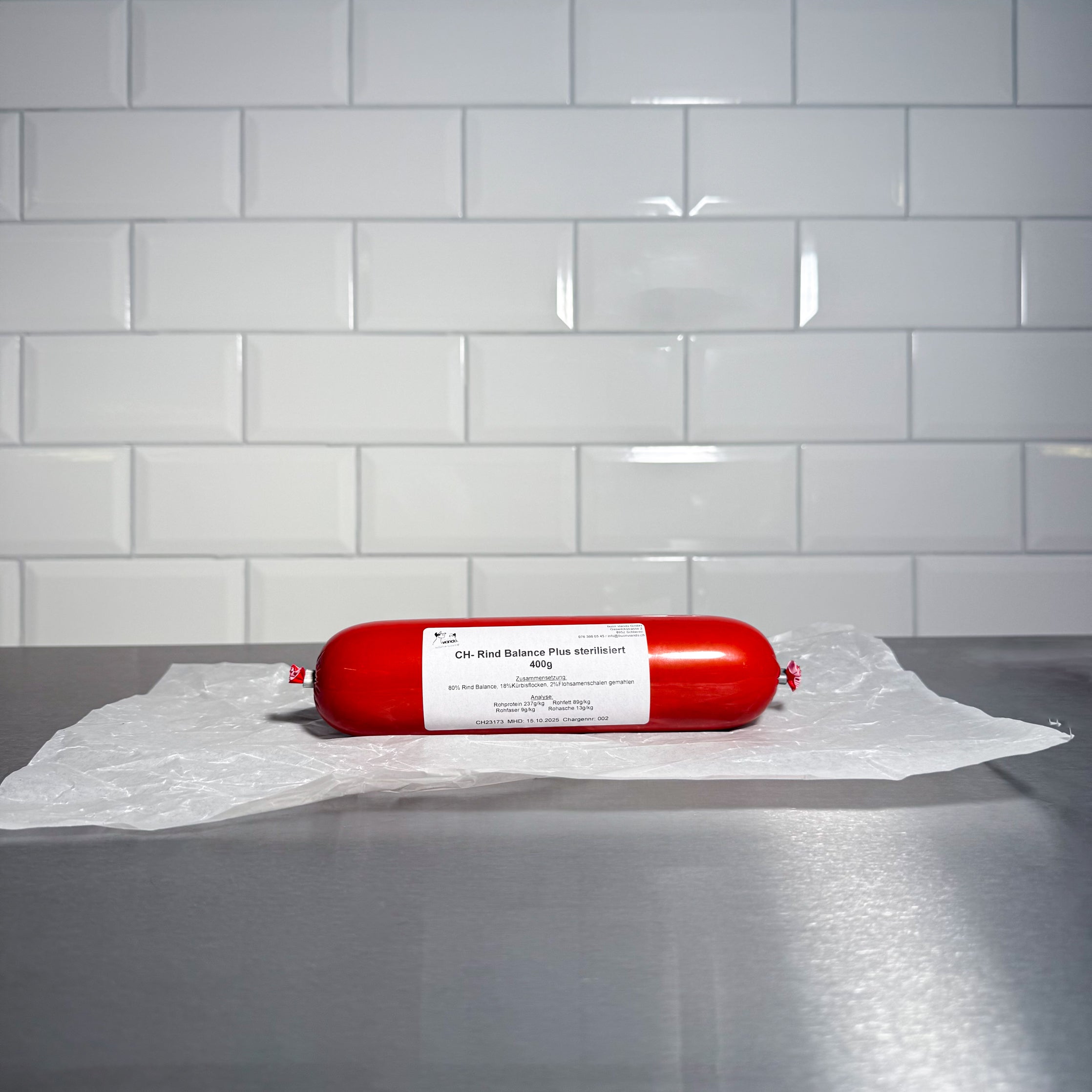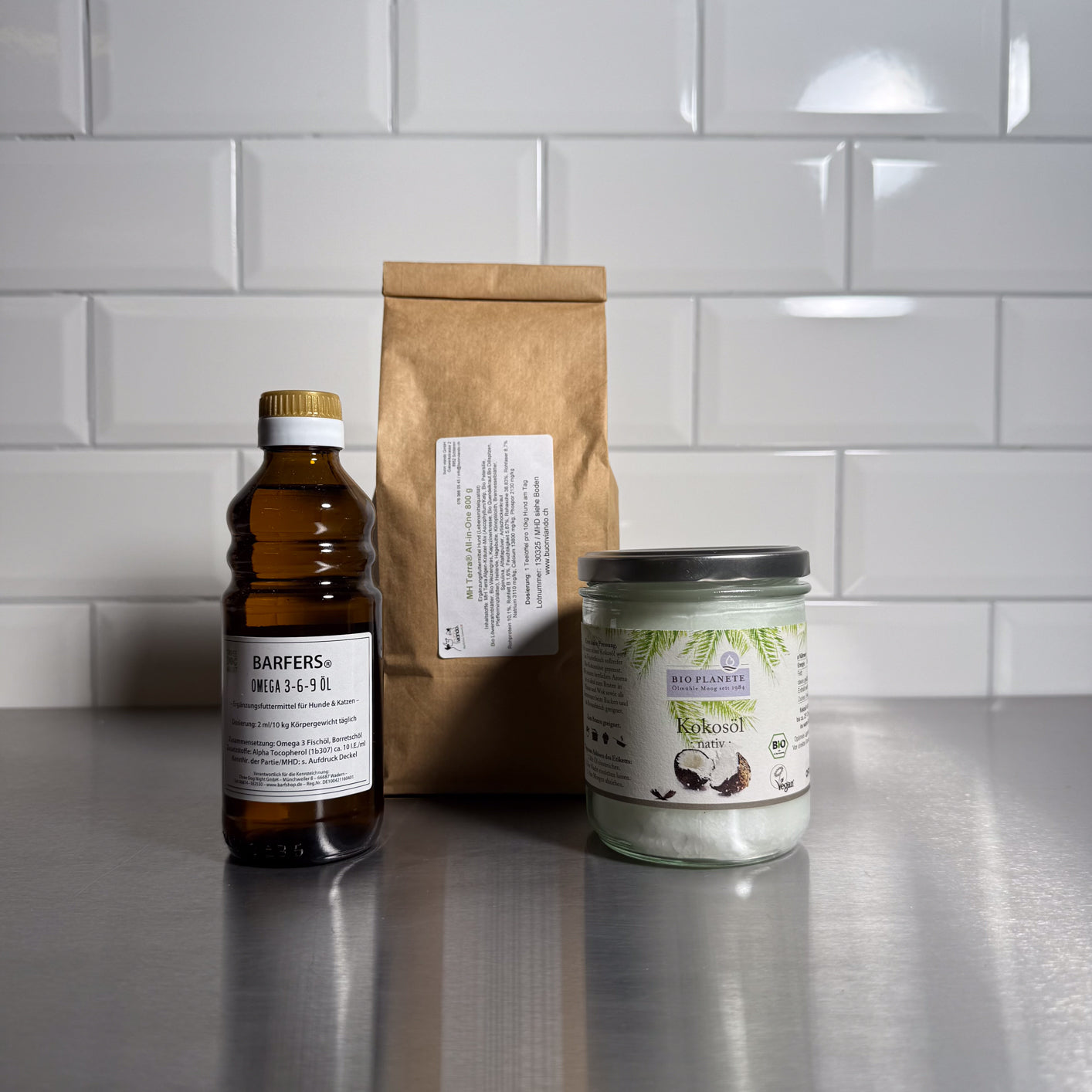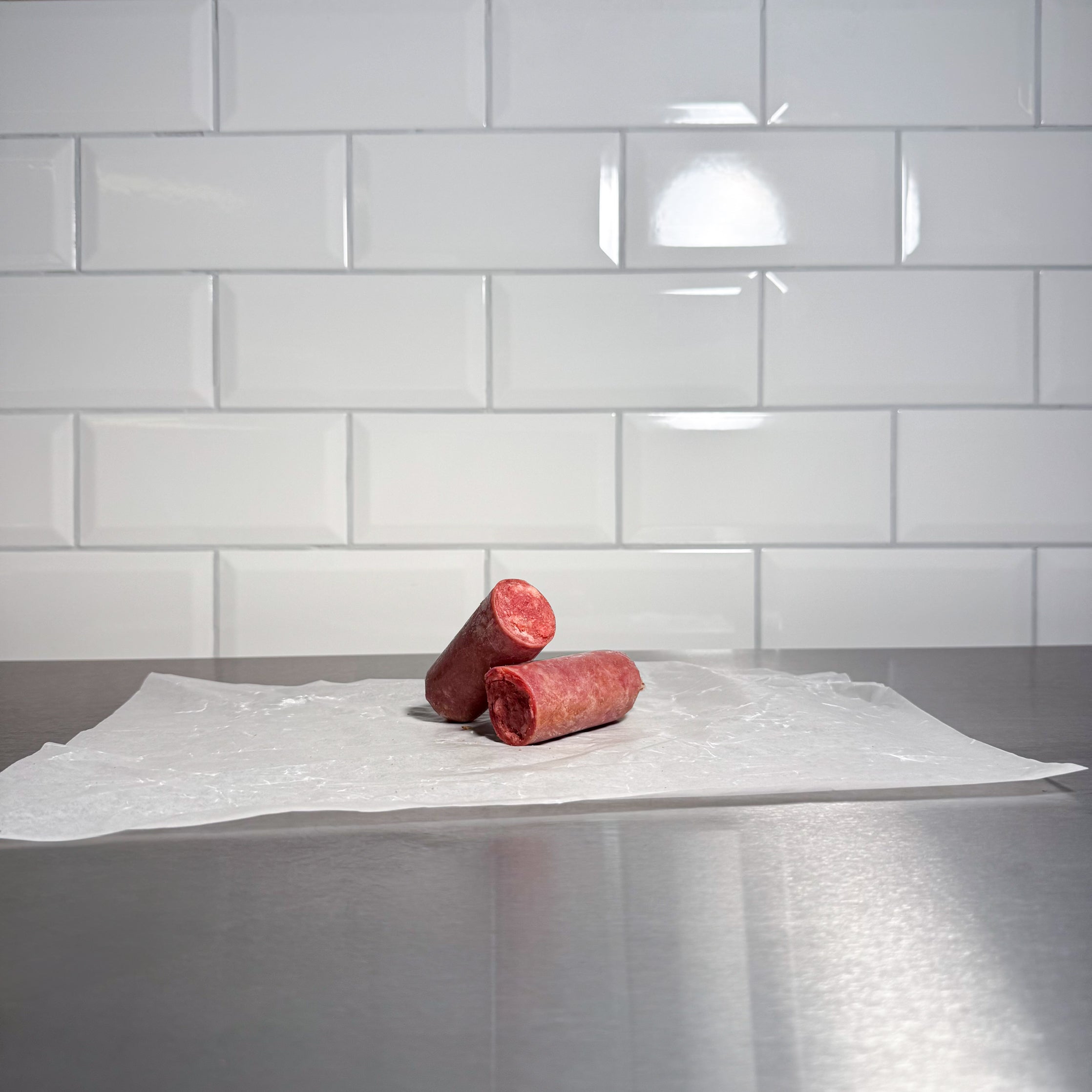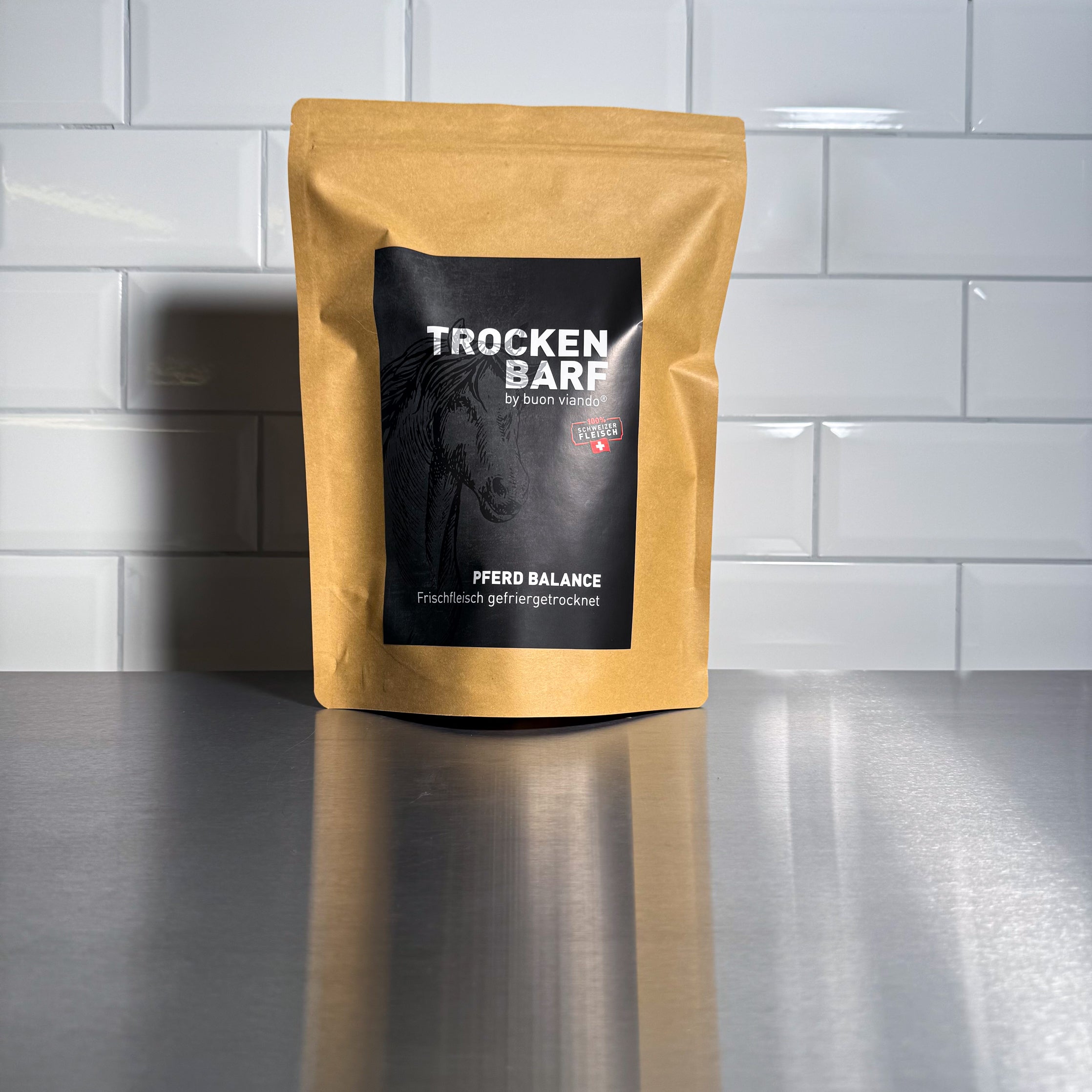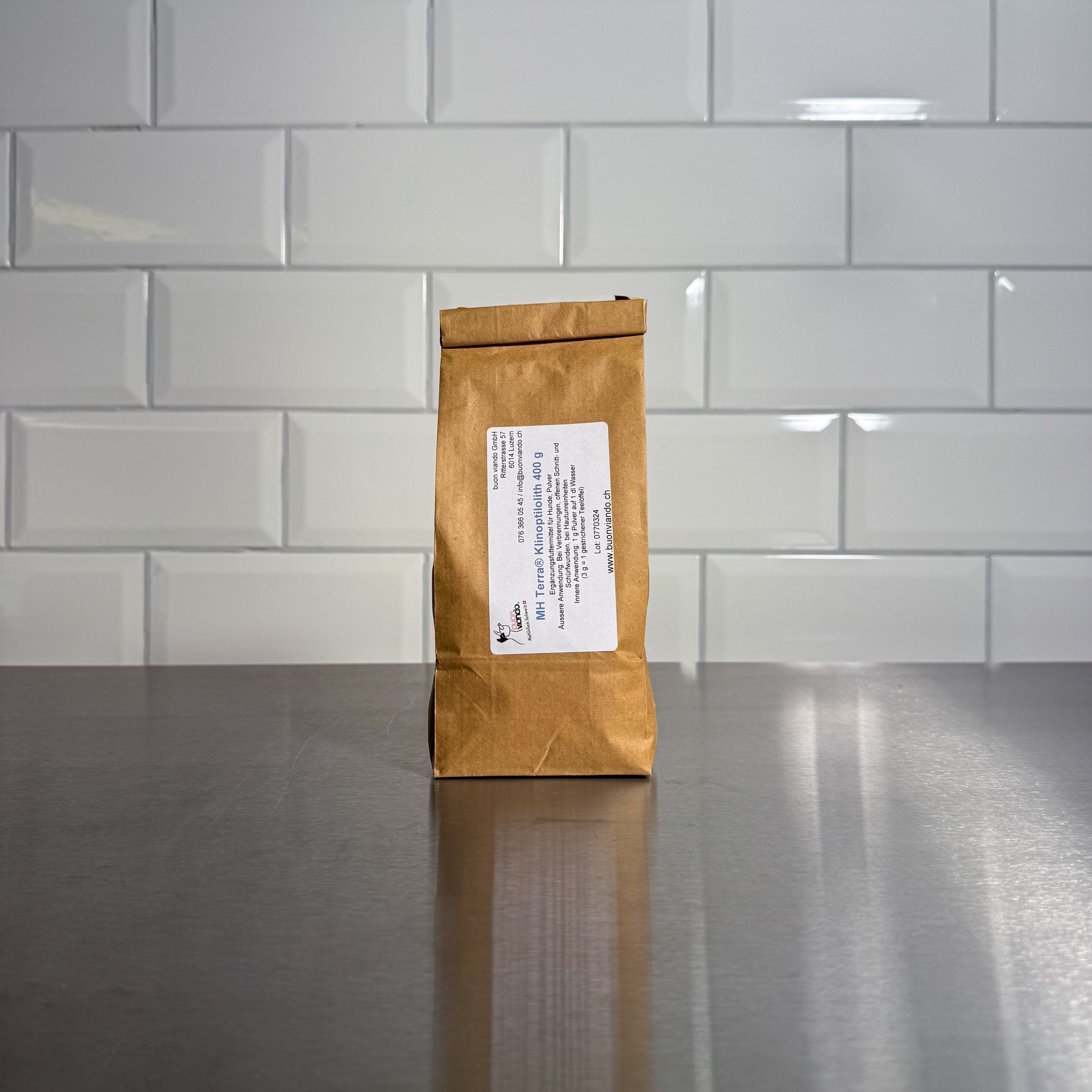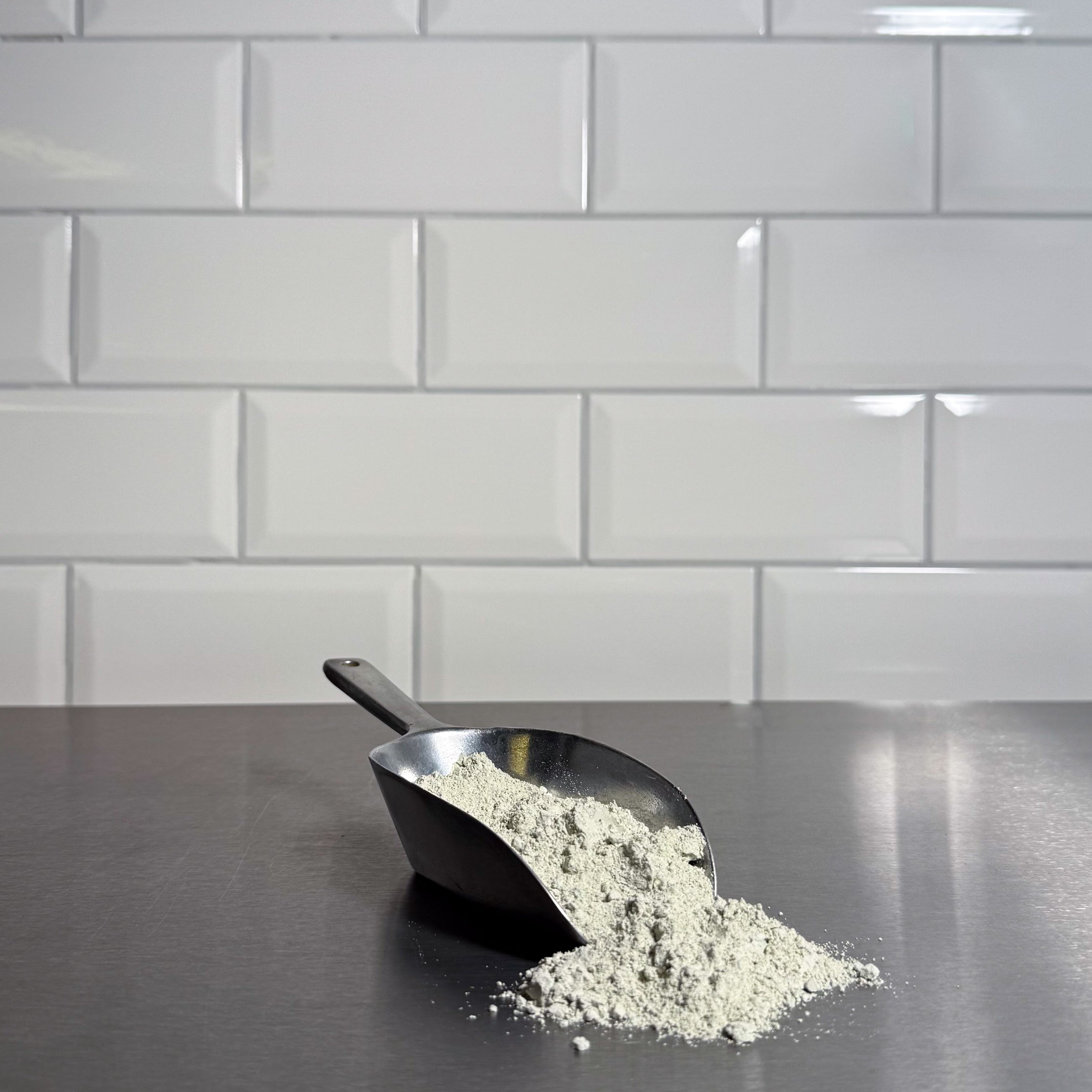What sounds like a tongue twister is actually a natural mineral of volcanic origin that has received increasing attention in animal nutrition in recent years. Clinoptilolite – a member of the zeolite family – is often used as a gentle detoxification aid for both dogs and cats. But how does it actually work, and is it suitable for all animals?
A small rock with a big impact
Clinoptilolite belongs to the zeolite family, which has a particularly porous structure. This structure acts like a sponge: It can bind and retain certain substances – including ammonium, heavy metals, or even pollutants from food or the environment. These are then excreted through the feces without placing additional strain on the metabolism.
This can be particularly helpful in the intestines: There, clinoptilolite helps bind unwanted substances while protecting the mucous membrane. This can be a useful supplement, for example, for sensitive animals, when changing food, or as part of a BARF diet.
Why we value it for dogs
Many dogs use clinoptilolite to support gastrointestinal problems or to accompany a detoxification regimen – for example, after medication or when organ function is compromised. It can help firm stools, calm the intestinal flora, and relieve the immune system. It's also worth a try for allergy sufferers or animals with frequent diarrhea.
Of course, this is no substitute for targeted diagnostics – but it has proven effective as an adjunctive support in many cases.
And what about cats?
This is where things get a little more nuanced. In principle, cats can also take clinoptilolite – although some are more sensitive to it. This is partly because cats can be more sensitive to minerals such as aluminum or silicon, which occur naturally in zeolites. Therefore, caution is advised: Not every cat tolerates clinoptilolite equally well.
The correct dosage is also important – less is often more. If you're unsure, we recommend speaking with a veterinary alternative practitioner or trained nutritionist beforehand. However, for cats with sensitive kidneys or livers, it can be quite supportive – used carefully.
Our Experience
We like to use clinoptilolite when it comes to gently relieving stress on the body. We particularly appreciate its balancing effect on dogs with digestive issues or during a diet change. Of course, it's not a magic cure – but it's definitely an exciting natural helper. And honestly: Who would have thought such a small volcanic rock could do so much?
As a course or daily – how often should clinoptilolite be added to the food?
We generally recommend feeding clinoptilolite as a course – i.e., over several weeks, depending on the need. The reason: clinoptilolite has a binding effect. And even though it primarily collects "unwanted guests" such as heavy metals or ammonium, it can also bind valuable minerals that the body actually wants to retain in the long term.
A typical course of treatment lasts between 3 and 6 weeks, depending on the intended use. During this time, the body can be relieved and digestion stabilized. Afterward, a break should be taken to ensure continued good nutrient absorption.
In exceptional cases—for example, with chronic conditions or older animals with ongoing stress—longer-term administration may be beneficial, but only in consultation with a specialist and with a reduced dosage.
Conclusion
Clinoptilolite is a natural mineral with great potential—particularly for supporting intestinal health and the elimination of toxins. Well-tolerated and versatile for dogs, it should be used with caution in cats.
For those seeking natural relief, clinoptilolite is a quiet but effective aid at their side.
Clinoptilolite – natural aid for digestion and detoxification



